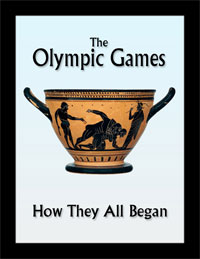
The Flood Tablet from the Epic of Gilgamesh presents a Babylonian version of the global deluge. Credit: BabelStone (Own work), CC0.
The Epic of Gilgamesh is an ancient Mesopotamian literary work that tells a fantastic story of King Gilgamesh’s failed quest for immortality. Set in early dynastic Uruk (c. 2600 BCE), Gilgamesh reentered the literary world in 1872, when George Smith—an Assyriologist at the British Museum—first translated a line of the poem from a cuneiform tablet that had recently been excavated from the great library of Ashurbanipal at Nineveh.
The anonymous work is named for its main character, King Gilgamesh, who some believe was an actual historical figure of the third millennium BCE, but was later venerated as a demigod or underworld deity.a Only fragments survive of the earliest, Old Babylonian version, which was produced in the Akkadian language shortly after 2000 BCE but which draws upon three separate and much earlier Sumerian poems featuring Gilgamesh. A more extensive Akkadian version of the composition survives on tablets from first-millennium BCE repositories at Nineveh, Assur, Sultantepe, Babylon, and Uruk. Known as the “standard version,” it is usually copied on 12 tablets. Prose retellings of the story were also written in the Hittite and Hurrian languages of Bronze Age Anatolia and Syria. Tablet fragments are now held by many museums, including the British Museum in London and the Sulaymaniyah Museum in Iraq.

Traditional scholarship assumes the literary work originated in oral tradition, like the epic poems of Homer. The canonical example of Homeric poetry led to characterization of the composition as an epic, hence the common name the Epic of Gilgamesh. Although some disagree and prefer to call it by the more neutral literary term “poem,” the traditional title serves to distinguish it from the earlier Sumerian poems featuring Gilgamesh.
The storyline begins in the Sumerian city-state of Uruk, where Gilgamesh befriends Enkidu—a savage created by gods to rival the tyrannical king but tamed in the meantime by a prostitute. Together, they kill the ferocious guardian of the Cedar Forest, Humbaba, bringing back valuable timbers. Gilgamesh resists seduction by the goddess Ishtar, who then seeks revenge by sending the bull of heaven to kill the audacious hero. With Enkidu’s help, the bull is killed. The two killings outrage the gods, who decree Enkidu’s death. Gilgamesh deeply mourns his friend and sets out on an arduous journey to understand the limits of human mortality and to find the only man with eternal life, Utnapishtim. Realizing he cannot achieve immortality, Gilgamesh returns to Uruk, and the spirit of Enkidu comes to tell him of the state of the dead.

Gilgamesh mastering a lion, in a relief from Khorsabad dated to the late eighth century BCE. Public Domain.
For biblical studies, Gilgamesh offers an intriguing early attestation of several stories and motifs later found in the Bible. Famously, one tablet contains the account of the Flood featuring Utnapishtim as the Babylonian Noah, while Enkidu’s creation from the soil parallels the biblical account of the Garden of Eden. The notoriously pessimistic Book of Ecclesiastes (Qohelet) seems to echo Gilgamesh’s message regarding the transient nature of life, and both works also contain the rare proverb, “A threefold cord is not quickly broken” (Ecclesiastes 4:12).b
Since its earliest modern translations, the poem has been celebrated for its enduring relatability. Gilgamesh’s struggle for peace and belonging, along with his restlessness, instinctive violence, and fear of death give the story a feel of timelessness. A tale of intimate friendship, loss, and grief, this ancient text appeals to our universal sense of fundamental humanity, even though its protagonist is a two-thirds divine overlord from 4,600 years ago. The many likely representations of Gilgamesh include this eighth-century BCE relief showing the hero grasping a lion and snake.
An unlikely bestseller, the Epic of Gilgamesh has been translated into two dozen languages. The recent publications in English include Sophus Helle’s Gilgamesh: A New Translation of the Ancient Epic (Yale Univ. Press, 2021) and a provoking exploration by literary historian Michael Schmidt, Gilgamesh: The Life of a Poem (Princeton Univ. Press, 2019). The authoritative scholarly publication is Andrew R. George, The Babylonian Gilgamesh Epic: Introduction, Critical Edition and CuneiformTexts, 2 vols. (Oxford Univ. Press, 2003).
Notes
a. Tzvi Abusch, “Gilgamesh: Hero, King, and a Striving Man,” Archaeology Odyssey, July/August 2000.
b. Karel van der Toorn, “Did Ecclesiastes Copy Gilgamesh?” Bible Review, February 2000.
Read more in Bible History Daily:
Read more in the BAS Library:
Not a BAS Library or All-Access Member yet? Join today.
Did Ecclesiastes Copy Gilgamesh?
Gilgamesh—Like You’ve Never Seen Him Before
The post The Epic of Gilgamesh first appeared on Biblical Archaeology Society.
The post The Epic of Gilgamesh appeared first on Biblical Archaeology Society.


0 Commentaires